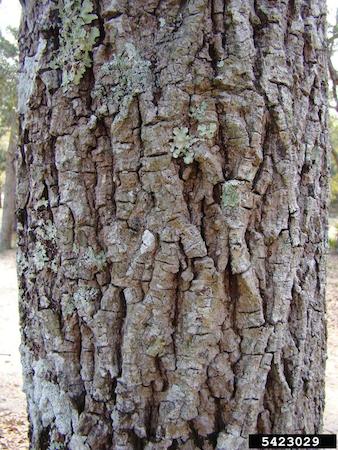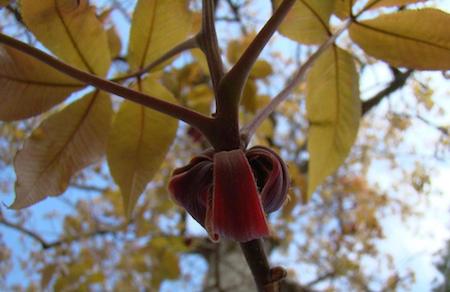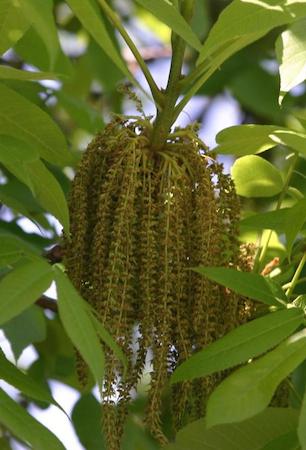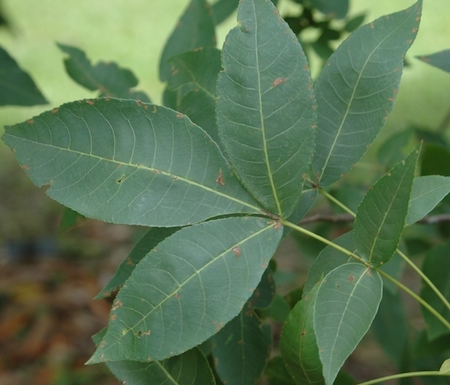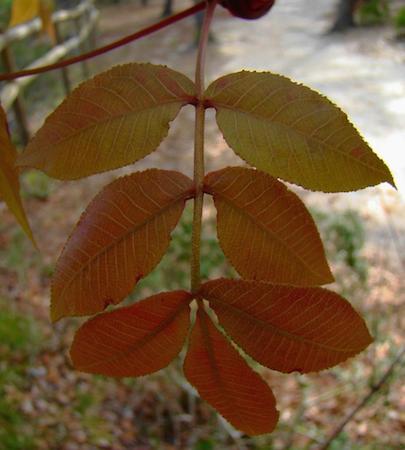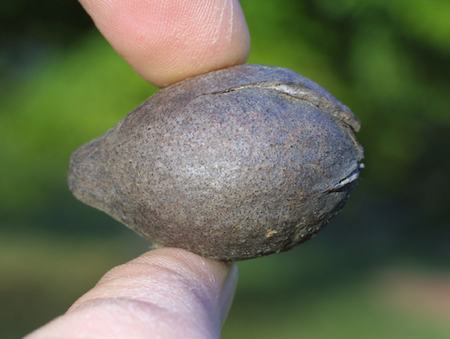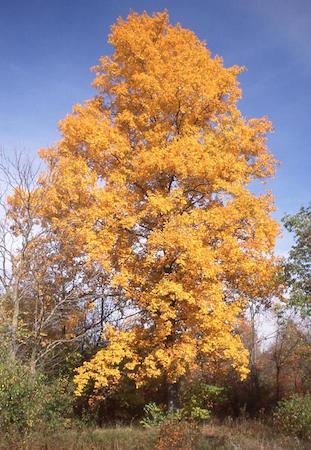Pignut Hickory
Specifications
- Also known as: Red hickory, swamp hickory
- Latin (scientific) name: Carya glabra. Cayra is from the Greek name used for “nut;” Glabra is Latin for fragrant. The foliage is very fragrant when crushed. Roll a bunch of leaves between your hands.
- Life expectancy: 300 years
- Height: 141 feet
- Circumference: 8 feet
-
The height and circumference measurements listed here are for the largest-known pignut hickory in the City of Atlanta. This tree is located in Fernbank Forest.
-
Special characteristics:
The various species of hickory trees are a bit hard to identify because they are similar in appearance. This tree is shallowly fissured with a diamond shaped pattern. The nuts have a pear shape.
-
Annoyance factors:
Hickory nuts! This is the main annoyance factor of any hickory tree. The nuts are big with this tree: Up to 1-1/2 inches in length, and ¾ to 1 ¼ in diameter. The nuts are hard and heavy. When they split, they only break open part of the way down. They will make an impression on you when they fall because they create a lot of noise if they hit a rooftop. They will ding a car. And you sure will notice it if your unprotected head gets smacked.
The nuts are treacherous if you step on them. There’s not a chance these nuts will crush like with an acorn. It takes a well-placed hammer pounding to break open one of these nuts. This means they will function like a well-oiled ball bearing if you have the misfortune of stepping on one lying on a driveway, walkway, or deck. Tread carefully during fruit-bearing season!
-
Fun Facts:
There are only a few four-legged critters that can pierce a hickory shell. They are all in the rodent family: grey squirrels, rats, and flying squirrels. They have those two front teeth that are designed for gnawing. In fact, they have to gnaw or their front teeth will grow too long.
Ever wonder who might be dropping hickory nuts in the dark? It’s the flying squirrels. They are little fellows that can’t snip a hefty hickory nut off a tree and run, like a grey squirrel can. So they drop them while it is dark and fly down for a meal. Why all the racket of falling nuts in the nighttime? It’s because the these flyers are nocturnal.
Notice the picture of a bract. A bract is a part of a plant that may resemble a leaf or a petal. Structurally, it is most similar to a leaf, but it is usually slightly different from the plant's leaves. Some bracts are green, while others are colored. Colored bracts can be quite bright, and are often mistaken for petals.
Bracts can be many shapes, sizes, and textures. They can be larger or smaller than the leaves and petals, and they are generally tougher. Their main function is to protect the flower from pests and harsh weather. When a flower first blooms, it is surrounded by the thick, green bracts. Some plants have two bracts while others have several. The flower blooms and grows out of the bracts, which remain on the plant and form the base of the flower. (From www.wisegeek.com)
-
Photo Credits:
Tree: T. Davis Sydnor, The Ohio State University, Bugwood.org
Bark: Rebekah D. Wallace, University of Georgia, Bugwood.org
Summer Leaves: Chris Evans, Illinois Wildlife Action Plan, Bugwood.org
Leaves in Fall: Rebekah D. Wallace, University of Georgia, Bugwood.org
Bract: Rebekah D. Wallace, University of Georgia, Bugwood.org
Flowers: T. Davis Sydnor, The Ohio State University, Bugwood.org
Nuts: Steven J. Baskauf, Vanderbilt University Bioimages

